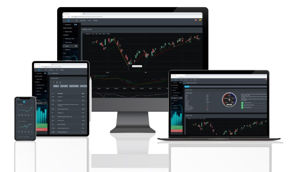Relative Strength Index (RSI)
The Relative Strength Index (RSI) is one of the most popular oscillator indicators and is considered quite reliable. This indicator developed by J. Welles Wilder in 1978, can be used in trading in all markets, both commodities, stocks, and forex. RSI is generally used by traders to measure speed (velocity) as well as changes (magnitude) of price movements.
Traditionally, the RSI indicator is used to determine the right time to enter or exit by looking at overbought and oversold levels. This indicator is described as a line that can move between two extreme points 0 - 100. When the RSI is above 70, this condition is considered as overbought or overvalued. Conversely, when the RSI is below 30, this indicates an oversold or undervalued condition.

In addition to knowing the velocity of prices, RSI can also be used to determine the direction of price movements. The picture above shows that from the beginning of February to mid-March, the RSI moved down. This is in line with price movements that continue to fall. Then when the RSI is in the oversold area, this is a signal for a reversal of the trend.
Not only can it show overbought and oversold levels, but RSI also has a middle level (centerline). This level of 50 or 50% is often ignored, even though this level can indicate the momentum of the direction of price movement when the retracement occurs, or when there is a change in direction of the trend. Then what is the centerline function on the RSI indicator?
When RSI penetrates the centerline towards the top, it becomes a signal for traders to place buy positions. Conversely, when the RSI penetrates the center line downwards, it becomes a signal to place a sell position. Consider the following example!

The chart above shows that when RSI is above level 50, the centerline functions as a support level. And when the centerline is successfully penetrated, then this becomes a sell signal. Conversely, when the RSI is below and leads up to penetrate the centerline, it becomes a signal for the buy signal.
How is RSI calculated?
Before calculating the RSI value, there are several components that must be calculated first, including Relative Strength, Average Gain, and Average Loss. And to simplify the explanation, the RSI calculation can be divided into two parts.
First, calculate the average gain and average loss for the past 14 periods:
- First Average Gain = Sum of Gains over the past 14 periods / 14
- First Average Loss = Sum of Losses over the past 14 periods / 14
The default time period parameter for RSI is 14. Welles Wilder recommends using period 14 on a daily time frame. According to him, the smaller the measurement period, the more sensitive it will be, making it difficult to observe. Whereas if the time period is too large, the indicator becomes less sensitive, thus affecting the accuracy of the measurement.
Now suppose the market closed higher seven out of the past 14 days with an average gain of 2%. The remaining seven days all closed lower with an average loss of -1.2%. The first part of RSI calculation is as follows:
The second, and subsequent, calculations are based on the prior averages and the current gain loss:
Average Gain = [(previous Average Gain) × 13 + current Gain] / 14
Average Loss = [(previous Average Loss) × 13 + current Loss] / 14
The second part of RSI calculation is as follows:
The RSI value fluctuates between 0 to 100. When the Average Gain for 14 periods is equal to zero, then the RSI is also zero. Meanwhile, the RSI will reach 100 if the Average Loss for 14 periods is equal to zero.
RSI Divergences
RSI is widely used by traders to see price movements. But the direction of price movements can often be different from the direction of the RSI. RSI Divergence is a situation where price movements move in different directions from the RSI. In general, there are two types of divergence, namely Bullish Divergence and Bearish Divergence.
Bullish Divergence
A bullish divergence occurs when prices reach new lows, but the RSI tends to rise instead. A bullish divergence can be used as a buy signal.

Bearish Divergence
A bearish divergence occurs when prices reach new high levels, but the RSI is not rising anymore. A bearish divergence can be used as a sell signal.

Limitation of RSI
There are no perfect indicators, including RSI. There are some weaknesses in the RSI that we should know when trading, including the following:
⦁ RSI often gives false signals due to graphic fluctuations that are too high. This generally happens if a trader uses a period of time that is too short.
⦁ RSI can be in an overbought and oversold area for a long time.
⦁ RSI can move drastically and suddenly, making it difficult for traders to determine the targeted price.
⦁ RSI is very suitable to be used in sideways market conditions. Conversely, when market conditions are in a strong trend, RSI becomes less accurate because it often gives false signals.
By knowing the weaknesses of the RSI, it is recommended that traders do not just rely on the RSI as the only indicator. Other indicators are also needed so that decisions made can be more accurate.




